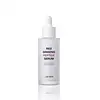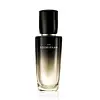What's inside
What's inside
 Key Ingredients
Key Ingredients

 Benefits
Benefits

 Concerns
Concerns

 Ingredients Side-by-side
Ingredients Side-by-side

Water
Skin ConditioningGlycerin
HumectantPanax Ginseng Root Water
MaskingPropanediol
SolventButylene Glycol
Humectant1,2-Hexanediol
Skin ConditioningMethyl Gluceth-20
HumectantPanthenol
Skin ConditioningButyrospermum Parkii Butter
Skin ConditioningCaprylic/Capric Triglyceride
MaskingOlea Europaea Fruit Oil
MaskingHydrogenated Lecithin
EmulsifyingSqualane
EmollientPoncirus Trifoliata Fruit Extract
Skin ConditioningPanax Ginseng Root Extract
EmollientAdenosine
Skin ConditioningGlyceryl Acrylate/Acrylic Acid Copolymer
HumectantPolyglyceryl-10 Laurate
Skin ConditioningDisodium EDTA
Phenyl Trimethicone
Skin ConditioningPentaerythrityl Tetraisostearate
EmollientPolyglycerin-3
HumectantCetyl Ethylhexanoate
EmollientCeramide NP
Skin ConditioningCholesterol
EmollientPolyglyceryl-10 Myristate
Skin ConditioningPhytosphingosine
Skin ConditioningGlyceryl Stearate
EmollientCentella Asiatica Extract
CleansingPortulaca Oleracea Extract
Skin ConditioningSodium Stearoyl Glutamate
CleansingTromethamine
BufferingSodium Polyacrylate
AbsorbentCarbomer
Emulsion StabilisingAcrylates/C10-30 Alkyl Acrylate Crosspolymer
Emulsion StabilisingChamomilla Recutita Flower Extract
MaskingVitex Agnus Castus Extract
AstringentAcetyl Hexapeptide-8
HumectantEthylhexylglycerin
Skin ConditioningPistacia Lentiscus Gum
MaskingParfum
MaskingWater, Glycerin, Panax Ginseng Root Water, Propanediol, Butylene Glycol, 1,2-Hexanediol, Methyl Gluceth-20, Panthenol, Butyrospermum Parkii Butter, Caprylic/Capric Triglyceride, Olea Europaea Fruit Oil, Hydrogenated Lecithin, Squalane, Poncirus Trifoliata Fruit Extract, Panax Ginseng Root Extract, Adenosine, Glyceryl Acrylate/Acrylic Acid Copolymer, Polyglyceryl-10 Laurate, Disodium EDTA, Phenyl Trimethicone, Pentaerythrityl Tetraisostearate, Polyglycerin-3, Cetyl Ethylhexanoate, Ceramide NP, Cholesterol, Polyglyceryl-10 Myristate, Phytosphingosine, Glyceryl Stearate, Centella Asiatica Extract, Portulaca Oleracea Extract, Sodium Stearoyl Glutamate, Tromethamine, Sodium Polyacrylate, Carbomer, Acrylates/C10-30 Alkyl Acrylate Crosspolymer, Chamomilla Recutita Flower Extract, Vitex Agnus Castus Extract, Acetyl Hexapeptide-8, Ethylhexylglycerin, Pistacia Lentiscus Gum, Parfum
Water
Skin ConditioningGlycerin
HumectantDimethicone
Emollient1,2-Hexanediol
Skin ConditioningButylene Glycol
HumectantGlyceryl Polymethacrylate
Propanediol
SolventSorbitol
HumectantSerine
MaskingCaprylic/Capric/Succinic Triglyceride
EmollientPanthenol
Skin ConditioningPEG/PPG-17/6 Copolymer
SolventHydrogenated Lecithin
EmulsifyingPropylene Glycol
HumectantNiacinamide
SmoothingCarbomer
Emulsion StabilisingTromethamine
BufferingTrehalose
HumectantSilica
AbrasiveDipropylene Glycol
HumectantLactobacillus Ferment
Skin ConditioningCurcuma Longa Root Extract
MaskingAdenosine
Skin ConditioningDimethicone/Vinyl Dimethicone Crosspolymer
Skin ConditioningPentylene Glycol
Skin ConditioningNatto Gum
Sodium Hyaluronate
HumectantTrisodium EDTA
Ethylhexylglycerin
Skin ConditioningAmodimethicone
Disodium EDTA
Sodium Hydroxide
BufferingArginine
MaskingAllantoin
Skin ConditioningDextrin
AbsorbentTheobroma Cacao Seed Extract
AntioxidantCitric Acid
BufferingBiosaccharide Gum-1
HumectantGlycyrrhiza Glabra Root Extract
BleachingSodium Lactate
BufferingAureobasidium Pullulans Ferment
Skin ConditioningYeast Extract
Skin ConditioningHoney
HumectantPolysorbate 20
EmulsifyingBeta-Glucan
Skin ConditioningAngelica Gigas Extract
Skin ConditioningYeast Beta-Glucan
Skin ConditioningAtractylodes Japonica Rhizome Extract
Skin ConditioningPanax Ginseng Root Extract
EmollientAstragalus Membranaceus Root Extract
EmollientPinus Densiflora Leaf Extract
AntimicrobialCornus Officinalis Fruit Extract
Skin ConditioningDioscorea Japonica Root Extract
Skin ConditioningLycium Chinense Fruit Extract
AntioxidantPaeonia Lactiflora Root Extract
Skin ConditioningRehmannia Chinensis Root Extract
Skin ConditioningSchisandra Chinensis Fruit Extract
Skin ConditioningDipotassium Glycyrrhizate
HumectantOphiopogon Japonicus Root Extract
Skin ConditioningPhellodendron Amurense Bark Extract
Skin ConditioningZiziphus Jujuba Fruit Extract
Skin ConditioningPalmitoyl Tripeptide-1
Skin ConditioningSodium Chloride
MaskingMethionine
Skin ConditioningPalmitoyl Tetrapeptide-7
Skin ConditioningPaeonol
AntioxidantDisodium Phosphate
BufferingSodium Phosphate
BufferingParfum
MaskingLinalool
PerfumingLimonene
PerfumingWater, Glycerin, Dimethicone, 1,2-Hexanediol, Butylene Glycol, Glyceryl Polymethacrylate, Propanediol, Sorbitol, Serine, Caprylic/Capric/Succinic Triglyceride, Panthenol, PEG/PPG-17/6 Copolymer, Hydrogenated Lecithin, Propylene Glycol, Niacinamide, Carbomer, Tromethamine, Trehalose, Silica, Dipropylene Glycol, Lactobacillus Ferment, Curcuma Longa Root Extract, Adenosine, Dimethicone/Vinyl Dimethicone Crosspolymer, Pentylene Glycol, Natto Gum, Sodium Hyaluronate, Trisodium EDTA, Ethylhexylglycerin, Amodimethicone, Disodium EDTA, Sodium Hydroxide, Arginine, Allantoin, Dextrin, Theobroma Cacao Seed Extract, Citric Acid, Biosaccharide Gum-1, Glycyrrhiza Glabra Root Extract, Sodium Lactate, Aureobasidium Pullulans Ferment, Yeast Extract, Honey, Polysorbate 20, Beta-Glucan, Angelica Gigas Extract, Yeast Beta-Glucan, Atractylodes Japonica Rhizome Extract, Panax Ginseng Root Extract, Astragalus Membranaceus Root Extract, Pinus Densiflora Leaf Extract, Cornus Officinalis Fruit Extract, Dioscorea Japonica Root Extract, Lycium Chinense Fruit Extract, Paeonia Lactiflora Root Extract, Rehmannia Chinensis Root Extract, Schisandra Chinensis Fruit Extract, Dipotassium Glycyrrhizate, Ophiopogon Japonicus Root Extract, Phellodendron Amurense Bark Extract, Ziziphus Jujuba Fruit Extract, Palmitoyl Tripeptide-1, Sodium Chloride, Methionine, Palmitoyl Tetrapeptide-7, Paeonol, Disodium Phosphate, Sodium Phosphate, Parfum, Linalool, Limonene
Ingredients Explained
These ingredients are found in both products.
Ingredients higher up in an ingredient list are typically present in a larger amount.
1,2-Hexanediol is a synthetic liquid and another multi-functional powerhouse.
It is a:
- Humectant, drawing moisture into the skin
- Emollient, helping to soften skin
- Solvent, dispersing and stabilizing formulas
- Preservative booster, enhancing the antimicrobial activity of other preservatives
Adenosine is in every living organism. It is one of four components in nucleic acids that helps store our DNA.
Adenosine has many benefits when used. These benefits include hydrating the skin, smoothing skin, and reducing wrinkles. Once applied, adenosine increases collagen production. It also helps with improving firmness and tissue repair.
Studies have found adenosine may also help with wound healing.
In skincare products, Adenosine is usually derived from yeast.
Learn more about AdenosineButylene Glycol (or BG) is used within cosmetic products for a few different reasons:
Overall, Butylene Glycol is a safe and well-rounded ingredient that works well with other ingredients.
Though this ingredient works well with most skin types, some people with sensitive skin may experience a reaction such as allergic rashes, closed comedones, or itchiness.
Learn more about Butylene GlycolCarbomer is a polymer of acrylic acid. Its main role is to create a gel consistency.
A high amount of carbomer can cause pilling or balling up of products. Don't worry, most products contain 1% or less of carbomer.
Disodium EDTA plays a role in making products more stable by aiding other preservatives.
It is a chelating agent, meaning it neutralizes metal ions that may be found in a product.
Disodium EDTA is a salt of edetic acid and is found to be safe in cosmetic ingredients.
Learn more about Disodium EDTAEthylhexylglycerin (we can't pronounce this either) is commonly used as a preservative and skin softener. It is derived from glyceryl.
You might see Ethylhexylglycerin often paired with other preservatives such as phenoxyethanol. Ethylhexylglycerin has been found to increase the effectiveness of these other preservatives.
Glycerin is already naturally found in your skin. It helps moisturize and protect your skin.
A study from 2016 found glycerin to be more effective as a humectant than AHAs and hyaluronic acid.
As a humectant, it helps the skin stay hydrated by pulling moisture to your skin. The low molecular weight of glycerin allows it to pull moisture into the deeper layers of your skin.
Hydrated skin improves your skin barrier; Your skin barrier helps protect against irritants and bacteria.
Glycerin has also been found to have antimicrobial and antiviral properties. Due to these properties, glycerin is often used in wound and burn treatments.
In cosmetics, glycerin is usually derived from plants such as soybean or palm. However, it can also be sourced from animals, such as tallow or animal fat.
This ingredient is organic, colorless, odorless, and non-toxic.
Glycerin is the name for this ingredient in American English. British English uses Glycerol/Glycerine.
Learn more about GlycerinHydrogenated Lecithin is created from the hydrogenation of lecithin (a group of phospholipids). Hydrogenation is a chemical reaction between hydrogen and another element.
This ingredient is an emollient and emulsifier. As an emollient, it helps soften skin by trapping moisture within. As an emulsifier, it prevents oil and water ingredients from separating.
Ginseng root is a well-loved ingredient in Asian skincare for good reason. It hydrates the skin, soothes irritation, and helps even out skin tone.
In traditional East Asian medicine, ginseng has been used for centuries both as food and as a healing remedy, and modern research continues to confirm its skin benefits.
One of the standout features of ginseng is its ability to improve blood circulation and oxygen delivery to the skin, bringing a fresh supply of nutrients to support overall skin health. It also has antioxidant and anti-inflammatory properties. This helps to protect your skin against damage from UV exposure, pollution, and daily stress.
Additionally, studies suggest that ginseng may help reduce hyperpigmentation by inhibiting tyrosinase, the enzyme involved in melanin production.
There are different types of ginseng used in skincare, and while they all share core benefits, their potency can vary.
Most products use fresh or white ginseng because it’s more affordable. However, red ginseng, produced by steaming the root, contains higher levels of ginsenosides, which are compounds with proven anti-aging effects. These ginsenosides help reduce the appearance of wrinkles and improve skin elasticity.
Note: All forms of ginseng are listed simply as “Panax ginseng” in ingredient lists. We recommend reaching out to the brand if you have questions about which type of ginseng is used in their ingredients.
For general antioxidant benefits, any ginseng extract will do, but for wrinkle care or firmer skin, red or fermented ginseng is often more effective.
In short, ginseng is a powerhouse ingredient that supports hydration, radiance, and resilience.
Learn more about Panax Ginseng Root ExtractPanthenol is a common ingredient that helps hydrate and soothe the skin. It is found naturally in our skin and hair.
There are two forms of panthenol: D and L.
D-panthenol is also known as dexpanthenol. Most cosmetics use dexpanthenol or a mixture of D and L-panthenol.
Panthenol is famous due to its ability to go deeper into the skin's layers. Using this ingredient has numerous pros (and no cons):
Like hyaluronic acid, panthenol is a humectant. Humectants are able to bind and hold large amounts of water to keep skin hydrated.
This ingredient works well for wound healing. It works by increasing tissue in the wound and helps close open wounds.
Once oxidized, panthenol converts to pantothenic acid. Panthothenic acid is found in all living cells.
This ingredient is also referred to as pro-vitamin B5.
Learn more about PanthenolParfum is a catch-all term for an ingredient or more that is used to give a scent to products.
Also called "fragrance", this ingredient can be a blend of hundreds of chemicals or plant oils. This means every product with "fragrance" or "parfum" in the ingredients list is a different mixture.
For instance, Habanolide is a proprietary trade name for a specific aroma chemical. When used as a fragrance ingredient in cosmetics, most aroma chemicals fall under the broad labeling category of “FRAGRANCE” or “PARFUM” according to EU and US regulations.
The term 'parfum' or 'fragrance' is not regulated in many countries. In many cases, it is up to the brand to define this term.
For instance, many brands choose to label themselves as "fragrance-free" because they are not using synthetic fragrances. However, their products may still contain ingredients such as essential oils that are considered a fragrance by INCI standards.
One example is Calendula flower extract. Calendula is an essential oil that still imparts a scent or 'fragrance'.
Depending on the blend, the ingredients in the mixture can cause allergies and sensitivities on the skin. Some ingredients that are known EU allergens include linalool and citronellol.
Parfum can also be used to mask or cover an unpleasant scent.
The bottom line is: not all fragrances/parfum/ingredients are created equally. If you are worried about fragrances, we recommend taking a closer look at an ingredient. And of course, we always recommend speaking with a professional.
Learn more about ParfumPropanediol is an all-star ingredient. It softens, hydrates, and smooths the skin.
It’s often used to:
Propanediol is not likely to cause sensitivity and considered safe to use. It is derived from corn or petroleum with a clear color and no scent.
Learn more about PropanediolTromethamine helps balance the pH and improve the texture of a product. It is synthetically created.
As an emulsifier, Tromethamine prevents oil and water ingredients from separating. This helps stabilize the product and elongate a product's shelf life. Tromethamine also makes a product thicker.
Tromethamine helps balance the pH level of a product. Normal pH level of skin is slightly acidic (~4.75-5.5). The acidity of our skin is maintained by our glands and skin biome. Being slightly acidic allows our skin to create an "acid mantle". This acid mantle is a thin barrier that protects our skin from bacteria and contaminants.
Oral Tromethanmine is an anti-inflammatory drug but plays the role of masking, adding fragrance, and/or balancing pH in skincare.
1,3-Propanediol, 2-amino-2-(hydroxymethyl)-
Learn more about TromethamineWater. It's the most common cosmetic ingredient of all. You'll usually see it at the top of ingredient lists, meaning that it makes up the largest part of the product.
So why is it so popular? Water most often acts as a solvent - this means that it helps dissolve other ingredients into the formulation.
You'll also recognize water as that liquid we all need to stay alive. If you see this, drink a glass of water. Stay hydrated!
Learn more about Water